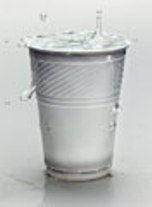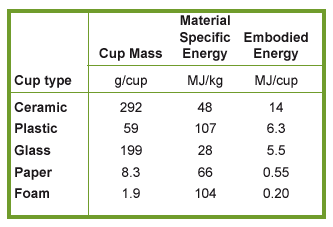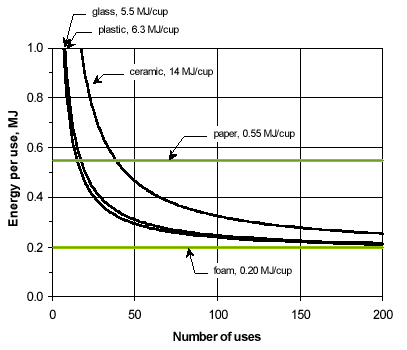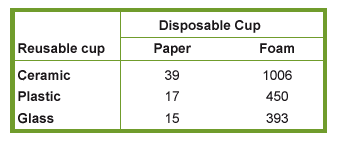My’Green’Cup-Economical Use of Disposal or Reusable Cup?
Interesting StuffDisposal Paper Cup or Reusable Plastic Cup

Plastic Cup is your choice?
Chemist Professor Martin B. Hocking from University of Victoria making use the theory of life cycle energy study shown that reusable cup is best used as compared to disposal cup in term of average lifetime if not broken but is not environmentally friendly.
The decision: Environmental friendly or lifetime usage or best of both worlds
The answer : Best of both worlds by exercising your own best judgement
– This is because neither reusable (glass , ceramic etc) nor disposable(paper , foam etc) has environmentally friendly advantage , and if the cup are likely to be lost or broken , disposable cup is very much the best choice.
– Why exercising own best judgement?For example , you may use reusable glass cup at home but disposable cup in the party especially outdoor activities.
Followings are the lifecycle studies to demonstrate three types of reusable drinking cups (ceramic, glass and reusable plastic) comparison to two types of disposable cups (paper and polystyrene foam).
Assumption was made by considering a commercial dishwasher washing power energy required to clean for each wash taking reference about 0.18 MJ/cup-wash.
1) The embodied energy in each of the five cups (last column) is the cup mass (first column) multiplied by the material specific energy (second column)

The table shown that the amount of energy to manufacture reusable cup is higher than disposable cups.Thus . to justify reusable cups viability is to use it many times verus cost with reference to :
If a cup lasts only ten uses, then each use gets “charged’ for one-tenth of the manufacturing energy. If it lasts for a hundred uses, then each use gets charged for only one-hundredth of the manufacturing energy.
2) The energy per use of each reusable cup (black lines) declines as it is used more times. The energy per use of each disposable cup (green lines) is a constant equal to the manufacturing energy, since it is used only once and is never washed. The numbers in the labels are the manufacturing energies for the different cups

The graph shown that increasing usage of reusable cups will get even closer to disposable lifetime by breaking even.
3) Break-even matrix. Each number shows the uses necessary before the reusable cup listed on the left, becomes equally energy efficient to the disposable cup listed on the top

The result shown that for example , ceramic glass needs 1036 times and 39 times usage frequency in order to breakeven with paper and foam respectively.
So , the final preposition is environmentally impact for either reusable or disposable doesn’t help much either but very much depend to one’s own decision over its usage . looking at cost point of view in term energy saving usage per se and practicability.